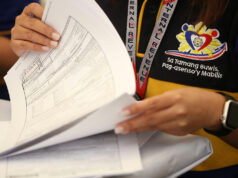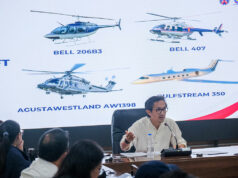
IF it were all up to good food, perhaps all the world’s problems would go away and peace would reign throughout the lands. As of yet, that solution is far from the horizon, but perhaps a cookbook can help?
The Department of Foreign Affairs (DFA) and the ASEAN Ladies Foundation (ALF) launched the book, Table for Ten: ASEAN Shared Food Traditions. The book contains contains 25 recipes and 12 essays on the cuisine of the ASEAN (Association of Southeast Asian Nations) member states: Brunei, Cambodia, Indonesia, Laos, Malaysia, Myanmar, the Philippines, Singapore, Thailand, and Vietnam. The book was launched in an intimate gathering at the DFA late last month, with tables laid out (fittingly) with treats from the aforementioned countries.
The book was put together as part of the 25th anniversary celebration of the ALF, but also as a way to celebrate the annual food festival for ASEAN, which had to be put off because of the pandemic.
According to Maria Lourdes B. Locsin, Chair of the ALF and wife of current Secretary of Foreign Affairs Teodoro L. Locsin, Jr., they had already planned the food festival, which was going to be combined with an exhibit on the musical instruments of the ASEAN states.
“When the second wave of the pandemic came, we had to shift gears,” she said in an interview with BusinessWorld. “It just so happened that Micky (Michaela Fenix; food writer, and one of the three co-authors of the book) and the Public Diplomacy (department) were working on this project. We said, ‘why don’t we do it together?’”
Ms. Fenix shares credit for the book with two more writers: Bryan Koh and Datu Shariff Pendatun. The book, unfortunately, isn’t for sale (yet).
“We’re not really selling this book. We didn’t have enough funds to publish that many. We only published 500,” said Ms. Locsin. Most of these were given to different embassies as gifts.
“This cookbook is different, because it carries stories that will make you get to know the culture of the country,” she said as one of the book’s merits. “It was perfect. Especially this year, ASEAN has started to flex its muscles.”
The book has 196 pages, and is divided into segments for rice, seafood, meat, soured broth, vegetables, and desserts. The division of the segments, composed of different recipes from the ASEAN countries, point towards similarities in the cuisine within the region (a point touched upon in essays in the book). Mrs. Locsin uses this point to highlight how these similarities strengthen bonds between the countries. For example, she notes the similarities between Malaysian rendang and Indonesian rendang (meat stewed in coconut milk and spices). “There are times when we kid each other, ‘let’s have a contest, and see whose rendang is better!’”
“The universal unifying factor is our cuisine. That’s the easiest thing to plan together and organize. Everybody has their own dishes that they want to share,” said Mrs. Locsin. She adds, “The ladies of ASEAN are always so willing to do some things together.”
At the same time, she notes how the differences in each cuisine — and therefore, in each culture — leads to better relationships still: “We just respect one another, so we welcome recognizing each one’s differences. I think it contributes to growth. We learn from each other.
“Most of the time, the best [thing] is to be able to share food, because then it’s shared with the rest: with the family, and with your peers. I think that’s why we’ve concentrated on food.”
On a less diplomatic and personal note, we asked Mrs. Locsin if there were any recipes that she favored. “I don’t know, but me, I’m a noodle person.” — Joseph L. Garcia



